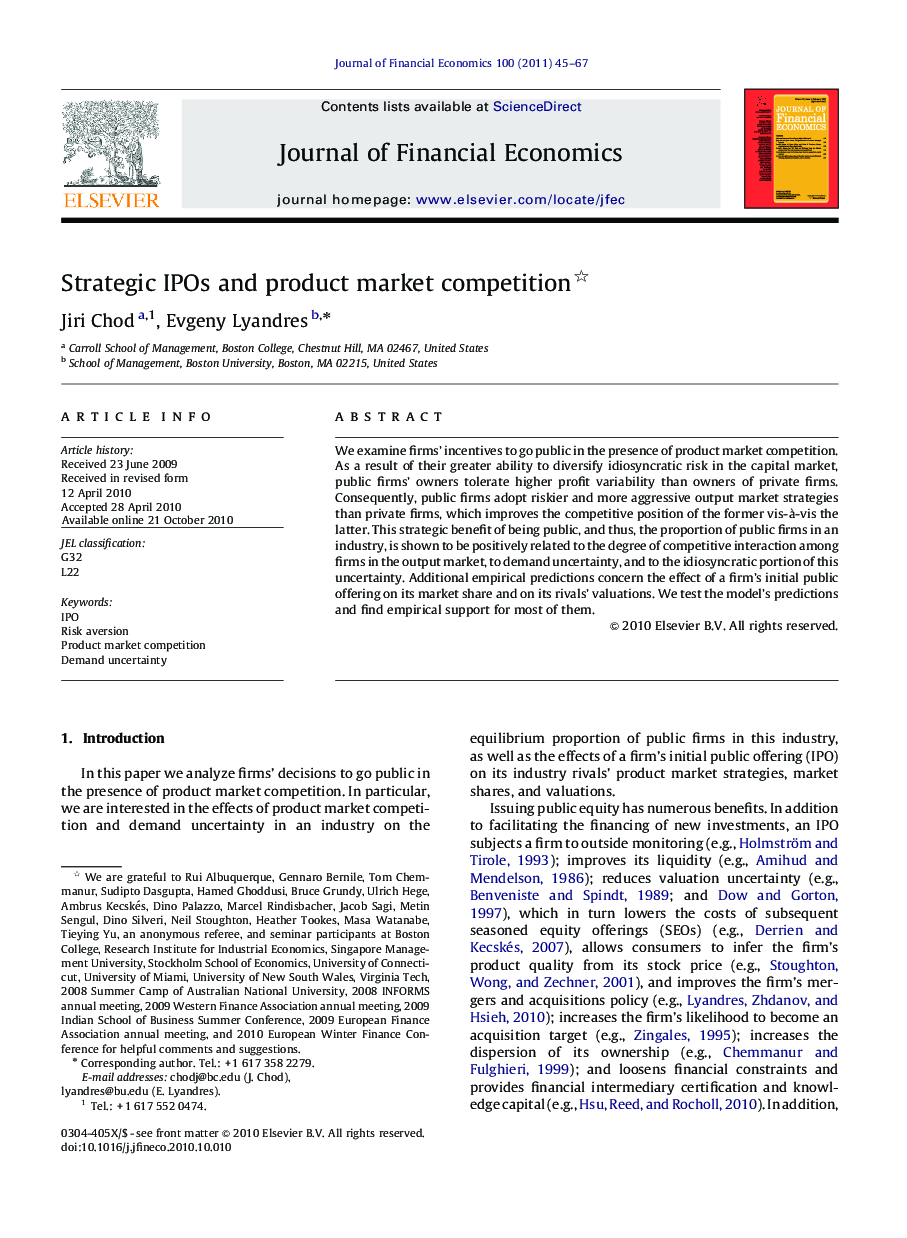| Article ID | Journal | Published Year | Pages | File Type |
|---|---|---|---|---|
| 960201 | Journal of Financial Economics | 2011 | 23 Pages |
We examine firms' incentives to go public in the presence of product market competition. As a result of their greater ability to diversify idiosyncratic risk in the capital market, public firms' owners tolerate higher profit variability than owners of private firms. Consequently, public firms adopt riskier and more aggressive output market strategies than private firms, which improves the competitive position of the former vis-à-vis the latter. This strategic benefit of being public, and thus, the proportion of public firms in an industry, is shown to be positively related to the degree of competitive interaction among firms in the output market, to demand uncertainty, and to the idiosyncratic portion of this uncertainty. Additional empirical predictions concern the effect of a firm's initial public offering on its market share and on its rivals' valuations. We test the model's predictions and find empirical support for most of them.
